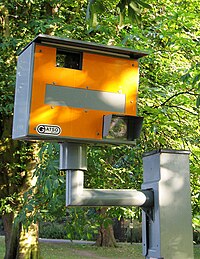
Photo from wikipedia
Abstract This study investigated impact of urban traffic on the acoustic comfort of roadside schools through both in-field measurements and on-site survey questionnaires. Six secondary schools were targeted, which are… Click to show full abstract
Abstract This study investigated impact of urban traffic on the acoustic comfort of roadside schools through both in-field measurements and on-site survey questionnaires. Six secondary schools were targeted, which are located near various types of roads in a prototype major city, Taiyuan, in the northern China. Noise levels were measured in front of the schools, in the schoolyard, and in the classrooms. The results indicated that noise pollution in these roadside schools was quite serious, and the school noise levels significantly correlated with the road traffic noise. The maximum measured equivalent A-weighted sound level (LAeq, 20min, LAeq) was 74.2 dB(A) near an expressway, which is 35% higher than the exterior threshold value (55.0 dB(A)) recommended by the World Health Organization. The on-site questionnaires revealed that all the students felt being disturbed by the road traffic noise and the degree of disturbance increased with the traffic level. Other noises (e.g., those from adjacent classrooms and that produced by student activities) were found acceptable. Further correlation analysis demonstrated a strong linear correlation between the level of road noise and highly disturbed respondents (R2: 0.928, p
Journal Title: Applied Acoustics
Year Published: 2019
Link to full text (if available)
Share on Social Media: Sign Up to like & get
recommendations!